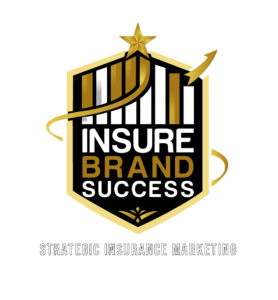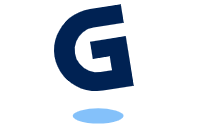Why Web Design Matters in the Insurance Industry
In today’s digital-first landscape, a well-designed website is no longer optional—it’s an essential asset for insurance agencies aiming to grow their client base. A strategic web presence acts as your agency’s digital storefront, enabling you to establish trust, demonstrate expertise, and engage potential clients at every stage of their decision-making process.
Why web design matters in the insurance industry becomes especially clear when you consider the competitive nature of the market. Prospects are often comparing multiple agencies online before making a decision. If your website is outdated, difficult to navigate, or not mobile-friendly, it can create a negative first impression and drive potential clients straight to your competitors. A modern, intuitive interface not only increases credibility but also communicates professionalism and reliability—qualities that are crucial when dealing with financial protection and risk management.
For insurance agency owners and marketing professionals, investing in effective web design is not just about aesthetics. It’s about driving results—from higher lead conversions to improved client retention. A user-centric design with clear calls to action, fast loading speeds, and seamless navigation can significantly improve how users interact with your brand. Furthermore, integrating educational content, customer testimonials, and easy-to-use quote forms ensures that your site supports the full sales funnel, guiding visitors from curiosity to commitment.
In short, web design isn’t just a visual concern—it’s a business growth tool. Whether you’re targeting homeowners, business clients, or individuals looking for life or health insurance, the right website design enhances every aspect of your outreach and communication efforts.
Core Elements of Effective Insurance Website Design
Clear and Professional Branding
Clear and professional branding is fundamental to building trust and recognition in the insurance industry. Your website should immediately communicate who you are, what you offer, and why visitors should trust you—from the moment they land on your homepage. In a space where clients are looking for reassurance and clarity, your branding must speak volumes before a single word is read.
This starts with a professional logo that reflects your agency’s identity and values. A well-designed logo serves as the visual anchor of your brand, appearing across your digital platforms, email signatures, documents, and promotional materials. Pair it with a consistent color palette that evokes the right emotions—whether it’s trust, security, or friendliness—and use it throughout the site to create a cohesive experience.
Equally important is clear messaging. Your value proposition should be front and center: What types of insurance do you specialize in? Who do you serve? What makes your agency different? Clear, concise headlines supported by scannable content ensure that visitors quickly understand how you can help them.
Finally, don’t underestimate the power of imagery that resonates with your target market. Authentic, high-quality visuals—whether of local communities, families, professionals, or business owners—help make an emotional connection and reinforce the services you provide. Avoid generic stock photos that don’t feel personal; instead, opt for visuals that reflect the people and situations your clients relate to.
When all these branding elements come together in harmony, they create a strong digital presence that builds credibility, improves engagement, and increases conversion potential.

Mobile Responsiveness
With over half of web traffic coming from mobile devices, your insurance website must look and perform flawlessly across all screen sizes. A seamless mobile experience isn’t just a nice-to-have—it’s an expectation. Whether a prospective client is browsing your site on a smartphone during a lunch break or researching coverage options on a tablet from home, every interaction must be intuitive, fast, and frustration-free.
A mobile-optimized design ensures that your site automatically adapts to various screen resolutions, offering clear navigation, readable text, and clickable elements that are easy to use on smaller devices. Forms should be simplified for mobile entry, and loading times need to be minimal—especially since mobile users tend to abandon sites that take more than a few seconds to load.
Beyond user experience, a mobile-optimized design also positively impacts your SEO rankings. Google’s mobile-first indexing means that the mobile version of your site is the primary basis for how your pages rank in search results. If your site doesn’t perform well on mobile, you’re likely to see a drop in visibility—especially when local prospects are searching for insurance services on the go.
Additionally, mobile optimization contributes to improved engagement metrics such as longer session durations, lower bounce rates, and higher conversion rates—all of which further signal to search engines that your site is trustworthy and relevant.
In a competitive industry like insurance, every digital advantage counts. Prioritizing mobile responsiveness isn’t just a technical requirement—it’s a strategic move to attract, convert, and retain more clients in an increasingly mobile-driven world.
Fast Load Speeds
Fast load speeds are critical to retaining visitors and converting them into clients. In an age where users expect instant access to information, slow websites can be a silent killer for insurance agencies. Studies show that even a one-second delay in page load time can lead to a 7% loss in conversions—a significant impact when every lead counts.
In the insurance industry, where trust and responsiveness are paramount, a sluggish website can signal inefficiency or outdated practices. Potential clients are likely to abandon your site if it takes too long to load, especially when they’re comparing multiple providers or browsing on mobile devices with limited bandwidth.
Several best practices can help ensure your website runs at optimal speed:
- Optimizing image sizes: Large, uncompressed images are one of the most common causes of slow load times. By compressing images without sacrificing quality and using next-gen formats like WebP, you can significantly reduce load times.
- Leveraging browser caching: When returning visitors don’t have to reload every asset, your site feels faster and more responsive. Proper caching strategies can dramatically improve performance for users revisiting your pages.
- Using a reliable hosting provider: The foundation of a fast website starts with quality hosting. Choose a hosting partner that offers solid uptime, fast server response times, and scalable resources to handle traffic spikes.
Additionally, using a Content Delivery Network (CDN) can further enhance speed by distributing your content across multiple servers worldwide, minimizing latency regardless of the user’s location.
Fast load speeds aren’t just a technical detail—they directly affect user satisfaction, SEO rankings, and your bottom line. For insurance agencies seeking to maximize online conversions and deliver a frictionless user experience, performance optimization should be a top priority.
Simple Navigation and User Experience (UX)
Simple navigation and user experience (UX) are foundational to any high-performing insurance website. When visitors land on your site, they should instantly feel oriented—able to find what they’re looking for quickly and without confusion. In a competitive digital landscape, clarity and ease of use are not just conveniences—they’re conversion drivers.
Start with intuitive menus that reflect the way users think. Avoid cluttered navigation bars or ambiguous labels. Instead, group services logically (e.g., Personal Insurance, Business Insurance, Claims Support) and ensure that every important page is accessible within a few clicks. A well-structured header and footer menu also help users quickly locate essential resources like FAQs, testimonials, or policy downloads.
Equally important are clear CTAs (calls to action). Whether the goal is to request a quote, schedule a consultation, or speak with an agent, your CTAs should be prominent, action-oriented, and strategically placed throughout the site. Use contrasting colors, concise wording, and contextual relevance—like placing a “Get a Free Quote” button next to service descriptions or after a testimonial.
A logical page hierarchy enhances this experience further. Organize your content to reflect a natural flow: from general overview pages to more specific service pages, and finally to conversion points like contact forms or quote request pages. Use breadcrumbs, internal links, and consistent page layouts to make navigation feel seamless.
Good UX design is also about reducing friction. Include search functionality, ensure mobile responsiveness, and minimize form fields to only what’s necessary. The less effort it takes for a visitor to move from interest to action, the more likely they are to convert.
By prioritizing simple navigation and user experience (UX), insurance agencies not only retain more visitors but also create a digital journey that builds confidence, encourages interaction, and supports business growth.
Strong Calls to Action
Strong calls to action (CTAs) are the bridge between user interest and meaningful engagement. On an insurance website, they play a pivotal role in converting visitors into leads by guiding them to take the next logical step—whether it’s requesting a quote, downloading a resource, or scheduling a consultation.
CTAs should be visible and compelling. Placement is key: they need to stand out visually, using contrasting colors, bold typography, and consistent positioning throughout your site. Strategically embed them within high-intent areas—like at the end of service descriptions, beside testimonials, or after an FAQ section—where users are most likely to take action.
The messaging itself must be clear and action-oriented. Avoid vague phrases like “Click Here” in favor of specific, benefit-driven prompts such as:
- “Get Your Free Auto Insurance Quote”
- “Schedule a Policy Review Today”
- “Download Our Homeowners Insurance Guide”
- “Talk to a Local Agent Now”
Each CTA should align with the content that surrounds it and match the user’s position in the decision-making funnel. For example, a visitor reading an educational blog post may respond best to a softer CTA like “Learn More About Coverage Options,” while someone on a product page is more likely to engage with a “Request a Quote” button.
It’s also important to reduce friction by ensuring that CTAs lead to fast-loading, mobile-friendly landing pages or forms that are short and easy to complete. The fewer barriers between interest and conversion, the better the performance.
Ultimately, strong calls to action not only drive conversions—they guide the user journey, reinforce your brand’s professionalism, and ensure your website is working hard to meet your business goals.
Integrating SEO Into Your Website Design
Search engine visibility is vital for attracting organic traffic. Incorporating Insurance SEO Services into the design process ensures your content is indexed, ranked, and easily discoverable.
On-Page SEO Best Practices
- Use keyword-rich titles and headers
- Optimize image alt-text and meta descriptions
- Ensure internal linking to pages like Insurance marketing strategies
- Leverage structured data for services and reviews
Local SEO Enhancements
Local SEO enhancements are essential for insurance agencies looking to connect with clients in their geographic market. When potential customers search for phrases like “auto insurance near me” or “best homeowners insurance in [city],” your agency needs to appear front and center. That visibility isn’t accidental—it’s the result of a strategic local SEO foundation.
To start, make sure your website includes location-specific keywords throughout key pages. This means incorporating your city, county, or service area into your homepage, service descriptions, meta titles, headers, and even image alt text. For example: “Affordable life insurance plans in Dallas” or “Trusted commercial insurance broker in Santa Monica.” These localized terms help search engines understand where your services are relevant, improving your chances of ranking in local search results.
Equally important is setting up and optimizing your Google Business Profile. This free listing is a high-impact tool that boosts your presence on Google Maps and in the local 3-Pack of search results. Ensure your profile includes accurate business details, service categories, a compelling description, office hours, and high-quality photos. Encourage satisfied clients to leave reviews regularly—positive ratings not only enhance credibility but also improve your local rankings.
Don’t stop there—claim and optimize listings in reputable online directories like Yelp, Yellow Pages, Bing Places, and local chambers of commerce. These listings should be consistent across platforms (same name, address, and phone number—NAP) to reinforce your agency’s legitimacy in the eyes of search engines.
For multi-location agencies, consider creating dedicated location pages on your website, each tailored with unique content and keywords relevant to that specific area. Include embedded maps, team photos, and localized testimonials to further boost trust and relevance.
By focusing on local SEO enhancements, your agency can dominate geographically relevant searches, attract more qualified leads, and build long-term visibility in your community.
Digital Marketing Synergies
Digital marketing for insurance agencies are most effective when your website acts as the central hub of all online efforts. For insurance agencies, a well-designed, conversion-optimized website doesn’t just stand alone—it amplifies the performance of every other digital marketing channel. From PPC campaigns to email automation, your website should be built to support, enhance, and unify your outreach.
Take PPC (pay-per-click) campaigns, for example. Ads on Google or social media may catch attention, but if the landing page they lead to is slow, confusing, or poorly designed, the lead is lost. A high-quality website ensures ad traffic lands in an environment that continues the user’s journey smoothly—with relevant messaging, fast load times, and clear CTAs that guide users toward conversion, such as quote requests or contact forms.
The same applies to email marketing and automation. Email funnels can nurture leads with educational content, seasonal offers, or renewal reminders—but those emails need a destination. A well-organized website with valuable resources, downloadable guides, client portals, or booking tools becomes the digital backbone of every automated journey.
In addition, your website can be the central content engine that powers social media engagement, SEO blogging, and video marketing. Educational blog posts, testimonial videos, FAQs, and case studies not only boost organic traffic but also provide content assets that can be shared across channels to build trust and authority.
Finally, integration is key. By aligning your website with tools like Google Analytics, CRM systems, Facebook Pixel, or email platforms like Mailchimp or ActiveCampaign, you create a unified ecosystem where all marketing efforts are measurable, trackable, and optimized.
By leveraging digital marketing synergies, insurance agencies can turn their website into more than just an online brochure—it becomes a dynamic growth engine that supports lead generation, client engagement, and long-term success.

PPC Landing Pages
PPC landing pages play a critical role in the success of any insurance agency’s paid advertising strategy. When users click on a Google AdWords campaign, they expect to land on a page that delivers exactly what the ad promised—nothing more, nothing less. To meet that expectation and convert that interest into action, your landing pages must be focused, fast-loading, and conversion-optimized.
The key to effective PPC landing pages lies in focus. Unlike standard service pages, these are designed with a single goal in mind—whether it’s to request a quote, download a resource, or schedule a consultation. Every element on the page, from the headline to the call-to-action (CTA), should support that goal. Eliminate distractions like full navigation menus or unrelated links. Instead, use persuasive copy, a clean design, and bullet-point benefits to keep the user moving toward the intended action.
Fast-loading performance is especially crucial in PPC contexts. You’re paying for every click—so any lag in load time could lead to wasted budget and lost conversions. Optimize images, use efficient code, and choose high-performance hosting to ensure your landing pages load in under two seconds, even on mobile devices.
Conversion optimization techniques like A/B testing, trust indicators (badges, testimonials, guarantees), and urgency cues (limited-time offers, countdown timers) can further boost performance. Forms should be short, clear, and easy to complete—asking only for the information you truly need to qualify a lead.
Each PPC campaign should have its own tailored landing page, aligned with the ad group’s specific keyword intent. This not only increases conversion rates but also improves your Google Ads Quality Score, which can lower cost-per-click and increase ad visibility.
By designing PPC landing pages with precision, insurance agencies can dramatically improve ROI, reduce cost per acquisition, and turn ad traffic into measurable business growth.
Email Marketing Integrations
Email marketing integrations are one of the most powerful ways to turn passive website visitors into loyal insurance clients. Your website shouldn’t just inform—it should actively capture leads and funnel them into automated email sequences that nurture prospects through the decision-making journey.
Start with strategically placed lead capture forms throughout your site. These can appear as embedded fields, pop-ups, slide-ins, or gated content downloads—offering something of value in exchange for a visitor’s email address. Think downloadable insurance guides, premium checklists, or quick quote forms. The key is relevance: the offer must align with the visitor’s needs and intent.
Once captured, those leads should automatically enter a targeted email marketing sequence via platforms like Mailchimp, ActiveCampaign, or HubSpot. These sequences should be tailored based on user behavior or interest—whether it’s auto insurance, commercial liability, or homeowners coverage. Personalized drip campaigns can educate prospects, answer common objections, provide social proof through testimonials, and ultimately drive them toward scheduling a consultation or requesting a quote.
Integration is vital. Your email system and CRM should sync with your website in real time, ensuring every lead is tracked, nurtured, and followed up on without manual work. This not only improves efficiency but also ensures that no lead slips through the cracks.
Email marketing integrations also support long-term client retention. After a policy is sold, continue engaging clients with renewal reminders, coverage updates, referral programs, and seasonal tips—directly from your website’s content ecosystem.
By leveraging seamless email marketing integrations, insurance agencies can transform their websites from static brochures into automated growth engines that build trust, deliver value, and close more deals.
Use your site to capture leads and funnel them into email marketing sequences that nurture prospects into clients.
Social Media Cross-Promotion
Incorporate social share buttons and embed feeds to reinforce your presence across platforms. For advanced tactics, explore our social media strategies for insurance agencies.
Enhancing Client Acquisition and Retention
A strategically designed website is a key component of client acquisition and retention programs. Here’s how:
Educational Content
Include blogs, guides, and FAQs to demonstrate thought leadership and help clients make informed decisions.
Trust Builders
Incorporate testimonials, case studies, and certifications. Link to authoritative sources like:
- National Association of Insurance Commissioners
- Small Business Administration – Marketing
- Insurance Information Institute
Secure Client Portals
Offer password-protected areas for existing clients to access documents, renew policies, or get support.
Measuring and Optimizing Website Performance
Design is not a set-it-and-forget-it endeavor. Use analytics tools to monitor traffic sources, bounce rates, and conversion paths. Conduct regular A/B testing on CTAs, landing pages, and lead forms.
Key Metrics to Watch:
- Average session duration
- Conversion rates
- Form completion and quote request submissions
- Source attribution (organic, direct, referral, paid)
Partner With Specialists Who Understand Insurance
At Insure Brand Success, we specialize in delivering insurance marketing strategies that drive real growth. Our custom-designed websites are built to convert and integrate seamlessly with your broader marketing efforts.
Whether you’re launching a new agency or refreshing your digital presence, our expert team is ready to help you:
- Craft compelling and compliant insurance websites
- Boost visibility through SEO solutions for insurance
- Maximize ROI with targeted AdWords for insurance campaigns
- Build and automate insurance email marketing funnels




